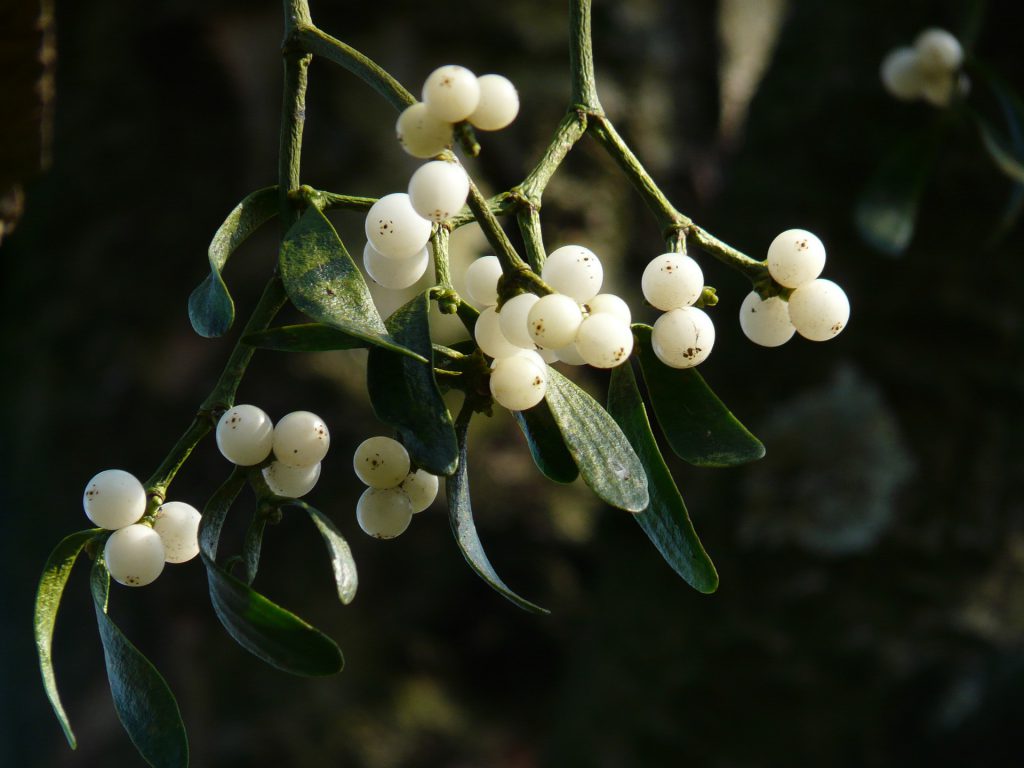
Mistletoe is one on the oldest symbols of Christmas. It is a hemi-parasitic plant. It grows on deciduous trees, most commonly apples and willows. It is evergreen, making it a popular winter decoration.
The Druids and Mistletoe
To the Druids and Celts it was considered to bestow fertility and a protector against poison. Mistletoe, rarely grows on oak trees (the oak to the Druids was sacred) and would be cut by the Druids on the sixth night of the moon with a gold sickle.
The Norse and Mistletoe
To the Norse it represented the death and re-birth of Baldur who was killed by a spear made of mistletoe. Upon his death the world was hit by winters and the gods restored his life to bring back stability. Frigga, mother of Baldur made the mistletoe a scared plant, and become a symbol of love and not death. It would later also symbolise in Scandinavia, a declaration of a truce between spouses who would kiss and make up.
By the Middle Ages mistletoe was hung from ceilings to ward off evil spirits. In mainland Europe it was placed over stable and house doors to stop witches from entering.
Christianity and Mistletoe
Originally holly was preferred at Christmas festivities by the church, but mistletoe which had been a symbol of hardiness and survival became a symbol of peace and goodwill. As it had been with the Norse.
The mistletoe kissing ball, made its first appearance during the 18th Century. During Christmas festivities a young lady standing under a ball of mistletoe should not refuse to be kissed. It symbolised the (Norse) goodwill, a lasting friendship and possibly a deep romance. If she were not to be kissed, it was believed she would not marry that following year. In parts of Europe, if a couple who are in love, kissing under the mistletoe it traditionally was interpreted as a promise in marriage. In France, the tradition is called Au gui l’An neuf, but instead of Christmas it is New Years Day.